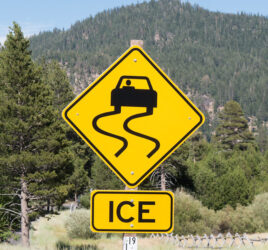
Can time heal the wounds? Childhood trauma and adult well-being
Many factors during our development can contribute to our present well-being. All our experiences from a very early age, even when we hardly remember them, may have an impact on how we think, what we feel, and what we do. Did you ever wonder which of your own childhood experiences influence most who you are now or how you feel?
In the tradition of research and practice in psychology, attention has been paid to Adverse Childhood Experiences (ACEs) and their outcomes later in adulthood. In this blog post, I will introduce ACEs, their prevalence, and their impact on later adult life as well as an overview of current research being carried out on the topic.
What kinds of childhood adverse experiences are we referring to?
The term ACEs refers to the abuse and neglect that occur during childhood (WHO, 2016). These could be physical, sexual, or emotional in nature. Furthermore, a broader understanding of ACEs includes also other kinds of stressful situations, such as violence against a parent, mental illness, or criminal behavior of a parent. Even though it would be hoped that most of the children do not experience such negative experiences, research shows that substantial proportion of adults have been exposed to one or more ACEs, with the numbers ranging from 24% to 61% worldwide (Stoltenborgh, Bakermans-Kranenburg, Alink, & van Ijzendoorn, 2015; Merrick, Ford, Ports, & Guinn, 2018).
The high prevalence of ACEs highlights the need for further research in the field. The study of ACEs can help societies and policy-makers to become aware of the existence of a problem and find the right strategies to reduce its incidence and impact on child development.
Apart from the obvious serious effects on children and adults’ wellbeing (Mersky & Topitzes, 2010), the literature suggests that childhood maltreatment forms a socio-economic burden for both individuals and societies (Caspi et al., 2017; Gilbert et al., 2009). In other words, the proportion of people who have been exposed to ACEs demand more economic expenses from organizations or governments, like health care or insurance claim, in comparison to not exposed adults.
Thus far, a wide range of negative consequences of ACEs has been studied covering the psychological, physical, and behavioral outcomes. It comprises a higher probability of developing depression, anxiety, post-traumatic stress disorder, as well as eating and personality disorders (Carr, Martins, Stingel, Lemgruber, & Juruena, 2013), suicide attempts, self-inflicted injuries, hazardous sexual behaviors, substance abuse (Norman et al., 2012) also obesity, physical inactivity, cancer, ischemic heart disease, stroke, diabetes, hepatitis, or skeletal fracture (Felitti et al., 1998), to mention some of the numerous consequences.
Is the picture so dark? Is there no hope for those who went thought an adverse childhood?
Psychologists know that not all who suffered a negative past experience kept a permanent (negative) footprint. In this regard, the phenomenon of “resilience” comes into play. Resilience refers to the ability to adapt and overcome difficult situations, such as trauma, tragedy, or threats (APA, 2020). Previous studies have demonstrated that between 20% and 50% of the children who suffered from ACEs showed to be resilient (Cicchetti, 2013). Resilience can be helpful, it seems, in two ways:
- Firstly, resilience can mitigate the negative impact of ACEs. For example, it seems that resilience might be a moderator factor between ACEs and the risk of psychopathology (Fritz, de Graaff, Caisley, van Harmelen, & Wilkinson, 2018). Findings suggest that certain factors, such as social support, high self-esteem, high distress tolerance, low emotional suppression contribute to the mental health of people exposed to ACEs.
- Secondly, there is the possibility for some people high in resilience, who have experienced ACEs, to experience so-called “post-traumatic growth”. Post-traumatic growth refers to an increased appreciation for life, better interpersonal relations, and greater awareness of one’s own personal strength after having gone through a traumatic experience (Tedeschi & Calhoun, 2004). Thus, by considering both resilience and post-traumatic growth, we believe that people who went through ACEs could even experience some positive outcomes eventually.
Resilience refers to the ability to adapt and overcome difficult situations, such as trauma, tragedy, or threats (APA, 2020).
(…) by considering both resilience and post-traumatic growth, we believe that people who went through ACEs could even experience some positive outcomes eventually.
So, what are we studying?
In our ongoing research, guided by Dr. Bertus Jeronimus, we want to examine the outcomes of ACEs on adult well-being using a broad array of outcomes, looking further than the absence or presence of psychopathology. After all, the mere absence of psychopathological symptoms does not necessarily mean living a fulfilling life. We know little about how exactly ACEs influence people’s goals and purpose in life, their ability to manage complex environments, their sense of personal autonomy, relations with others, or their psychological strengths such as self-acceptance. Taking into account the theories of resilience and personal growth, we aim to explore whether ACEs could also be associated with positive facets of adults’ psychological well-being beyond psychopathology.
We hope to find an answer to all these questions using the data from the HND (HowNutsAreTheDutch) study. We aim to provide an overview of ACEs and their associations with adult’s psychological well-being expecting that at least, a few positive associations will be found. Finally, we hope that our study may open a new, broader, and more positive perspective in the research on ACEs.
References
American Association of Psychiatry [APA]. (2020, February 1). Building your resilience. http://www.apa.org/topics/resilience
Carr, C. P., Martins, C. M. S., Stingel, A. M., Lemgruber, V. B., & Juruena, M. F. (2013). The Role of Early Life Stress in Adult Psychiatric Disorders A Systematic Review According to Childhood Trauma Subtypes. Journal of Nervous and Mental Disease, 201(12), 1007-1020. doi: 10.1097/nmd.000000000000004
Caspi, A., Houts, R. M., Belsky, D. W., Harrington, H., Hogan, S., Ramrakha, S., . . . Moffitt, T. E. (2017). Childhood forecasting of a small segment of the population with large economic burden. Nature Human Behaviour, 1(1). doi: 10.1038/s41562-016-0005
Cicchetti, D. (2013). Annual Research Review: Resilient functioning in maltreated children – past, present, and future perspectives. Journal of Child Psychology and Psychiatry, 54(4), 402-422. doi: 10.1111/j.1469-7610.2012.02608.x
Felitti, V. J., Anda, R. F., Nordenberg, D., Williamson, D. F., Spitz, A. M., Edwards, V., . . . Marks, J. S. (1998). Relationship of childhood abuse and household dysfunction to many of the leading causes of death in adults – The adverse childhood experiences (ACE) study. American Journal of Preventive Medicine, 14(4), 245-258. doi: 10.1016/s0749-3797(98)00017-8
Fritz, J., de Graaff, A. M., Caisley, H., van Harmelen, A.-L., & Wilkinson, P. O. (2018). A Systematic Review of Amenable Resilience Factors That Moderate and/or Mediate the Relationship Between Childhood Adversity and Mental Health in Young People, Frontiers in Psychiatry, 9(230). doi: 10.3389/fpsyt.2018.00230
Gilbert, R., Widom, C. S., Browne, K., Fergusson, D., Webb, E., & Janson, S. (2009). Child Maltreatment 1 Burden and consequences of child maltreatment in high-income countries. Lancet, 373(9657), 68-81. doi: 10.1016/s0140-6736(08)61706-7
Merrick, M. T., Ford, D. C., Ports, K. A., & Guinn, A. S. (2018). Prevalence of Adverse Childhood Experiences From the 2011-2014 Behavioral Risk Factor Surveillance System in 23 States. Jama Pediatrics, 172(11), 1038-1044. doi:10.1001/jamapediatrics.2018.2537
Mersky, J. P., & Topitzes, J. (2010). Comparing early adult outcomes of maltreated and non-maltreated children: A prospective longitudinal investigation. Children and Youth Services Review, 32(8), 1086–1096. doi: 10.1016/j.childyouth.2009.10.018
Norman, R. E., Byambaa, M., De, R., Butchart, A., Scott, J., & Vos, T. (2012). The Long-Term Health Consequences of Child Physical Abuse, Emotional Abuse, and Neglect: A Systematic Review and Meta-Analysis. Plos Medicine, 9(11). doi: 10.1371/journal.pmed.1001349
Stoltenborgh, M., Bakermans-Kranenburg, M. J., Alink, L. R. A., & van Ijzendoorn, M. H. (2015). The Prevalence of Child Maltreatment across the Globe: Review of a Series of Meta-Analyses. Child Abuse Review, 24(1), 37-50. doi: 10.1002/car.2353
Tedeschi, R. G., & Calhoun, L. G. (2004). Posttraumatic growth: Conceptual foundations and empirical evidence. Psychological Inquiry, 15(1), 1-18. doi: 10.1207/s15327965pli1501_01
World Health Organization [WHO]. (30 September 2016). Child Maltreatment. Retrieved from https://www.who.int/news-room/fact-sheets/detail/child-maltreatment
Note: Featured Image taken by Solomiia Myroniuk.



